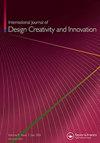增材制造:研究增材制造设计的使用,以鼓励工程设计行业的创造力
IF 2.5
Q4 ENGINEERING, MANUFACTURING
International Journal of Design Creativity and Innovation
Pub Date : 2020-09-07
DOI:10.1080/21650349.2020.1813633
引用次数: 19
摘要
摘要增材制造(AM)的功能使设计师能够产生和构建超越传统制造限制的创造性解决方案。然而,设计者还必须适应AM限制,以最大限度地减少构建失败。一些研究人员提出了将AM设计(DfAM)集成到工程设计中的设计工具和教育干预措施。然而,有必要调查DfAM培训对行业专业人员使用这些技术的影响及其对其设计创造力的后续影响。在本文中,我们提出了一项基于研讨会的研究,在该研究中,行业专业人士被依次介绍给机会主义和限制性的DfAM。参与者还接受了一项DfAM任务,在每次内容讲座之间进行简短的想法生成会议。参与者在接受DfAM训练前后的设计、DfAM和创造性自我效能进行了比较。结果表明,DfAM训练成功地提高了参与者的限制性DfAM自我效能;然而,他们的机会主义DfAM或创造性自我效能没有变化。此外,研究结果显示,参与者设计的独特性和整体创造力有所提高,但设计最初的高实用性没有明显变化。这些发现表明,DfAM培训提供了一个鼓励创造性想法产生的机会。本文章由计算机程序翻译,如有差异,请以英文原文为准。
Additive creativity: investigating the use of design for additive manufacturing to encourage creativity in the engineering design industry
ABSTRACT The capabilities of additive manufacturing (AM) enable designers to generate and build creative solutions beyond the limitations of traditional manufacturing. However, designers must also accommodate AM limitations to minimize build failures. Several researchers have proposed design tools and educational interventions for integrating design for AM (DfAM) in engineering design. However, there is a need to investigate the effect of DfAM training on industry professionals’ use of these techniques and its subsequent effects on the creativity of their designs. In this paper, we present a workshop-based study in which industry professionals were sequentially introduced to opportunistic and restrictive DfAM. Participants were also given a DfAM task, with short idea generation sessions conducted between each content lecture. The participants’ designs and their DfAM and creative self-efficacies were compared from before to after receiving DfAM training. The results show that DfAM training successfully increased participants’ restrictive DfAM self-efficacy; however, no changes were seen in their opportunistic DfAM or creative self-efficacies. Further, the results show an increase in the uniqueness and overall creativity of the participants’ designs, but no significant changes were seen in the initially high usefulness of the designs. These findings suggest that DfAM training presents an opportunity to encourage creative idea generation.
求助全文
通过发布文献求助,成功后即可免费获取论文全文。
去求助
来源期刊

International Journal of Design Creativity and Innovation
ENGINEERING, MANUFACTURING-
CiteScore
3.80
自引率
27.80%
发文量
15
期刊介绍:
The International Journal of Design Creativity and Innovation is an international publication that provides a forum for discussing the nature and potential of creativity and innovation in design from both theoretical and practical perspectives. Design creativity and innovation is truly an interdisciplinary academic research field that will interest and stimulate researchers of engineering design, industrial design, architecture, art, and similar areas. The journal aims to not only promote existing research disciplines but also pioneer a new one that lies in the intermediate area between the domains of systems engineering, information technology, computer science, social science, artificial intelligence, cognitive science, psychology, philosophy, linguistics, and related fields. The journal covers, but is not restricted to, the following topics: ·Theories on Design Creativity and Innovation ·Cognition of Design Creativity ·Innovative Process ·Inventive Process ·Analogical Reasoning for Design Creativity and Innovation ·Design Synthesis ·Method and Tools for Design Creativity and Innovation ·Representation of Design Creativity and Innovation ·Education for Design Creativity and Innovation ·Concept Generation and Inspiration.
 求助内容:
求助内容: 应助结果提醒方式:
应助结果提醒方式:


